Designs unveiled for Museum of Troy
News: Turkish firm Yalın Mimarlık has won a competition to design an archaeological museum on the site of the ancient city of Troy in north-west Turkey (+ movie).
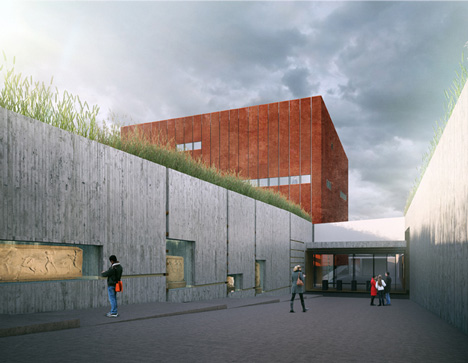
Turkey's Ministry of Culture and Tourism selected a team from Yalın Mimarlık led by Ömer Selçuk Baz for the project at the UNESCO World Heritage site in the province of Çanakkale.
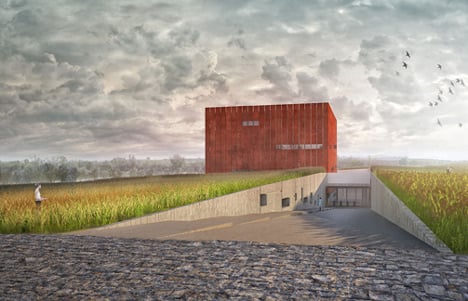
First excavated in 1870, Troy is famous for the mythical siege narrated in Homer's Iliad, and the extensive remains discovered at the site reveal the earliest contact made between the civilisations of Asia and the Mediterranean.
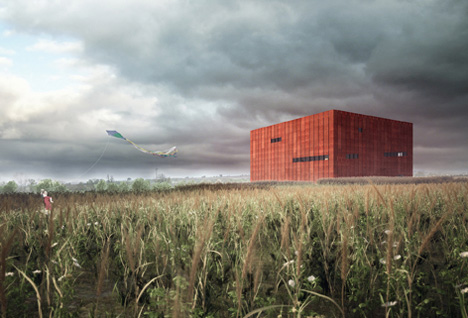
The museum will take the form of a large cube clad in Corten steel panels, accessed via a ramp leading underground.
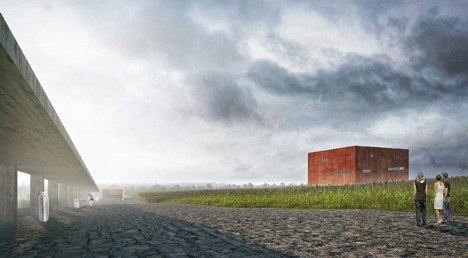
From the subterranean level, visitors will be able to walk up ramps leading through the exhibition spaces to a rooftop terrace.
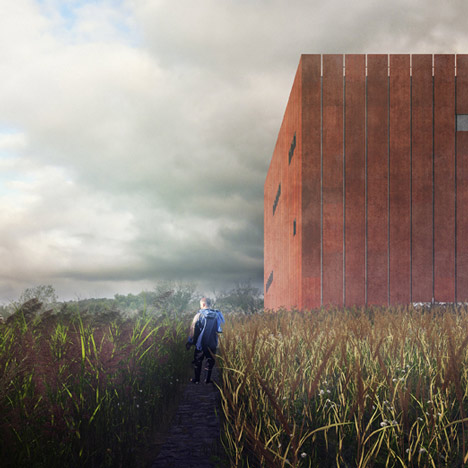
The programme also includes conservation laboratories and storage space for the collection, which includes ancient artefacts dating back some 3000 years, as well as activity areas, a shop and a cafe and restaurant.
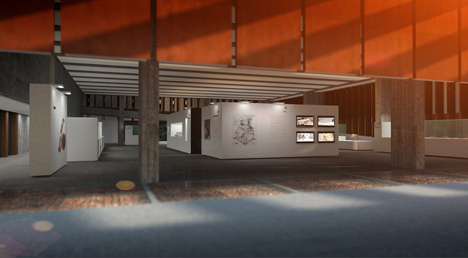
Last year Dezeen was in Turkey for the Istanbul Design Biennial, where organiser Bülent Eczacıbaşı said his country needed better design for its cities and products – see all stories from the Istanbul Design Biennial.
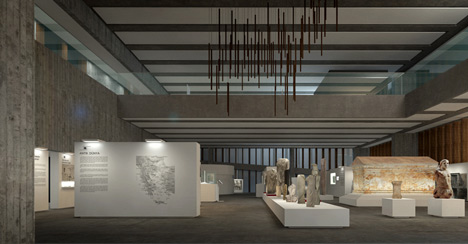
Other projects in Turkey we've featured include a seaside temple made from chunky chipboard and a proposal for a swimming pool under an inverted dome – see all Turkish architecture.
Images and movie are by Cihan Poçan.
Here's some more information from the architects:
Omer Selcuk Baz and his team in Yalin Architectural Design has won first prize in the National Architectural Design Competition for the Museum of Troy, one of the most famous archeological sites in the world, listed as UNESCO World heritage site. With a history of 5000 years and a significance for the development of European Civilization, Troy represents artistically and historically a profound cultural influence from the time of Homer to the World War I.
The Ministry of Culture and Tourism of Turkey, the organiser of the competition expropriated 10 hectares for the purpose. The museum is planned to be constructed close to the archaeological site, adjacent to the village of Tevfikiye in Canakkale. It will conserve and exhibit the artifacts unearthed at the site. The museum contains conservation and restoration labs, 2000 sq m of storage, permanent and temporary exhibition spaces, activity areas, café, restaurants and retail facilities as well as access to natural environment.
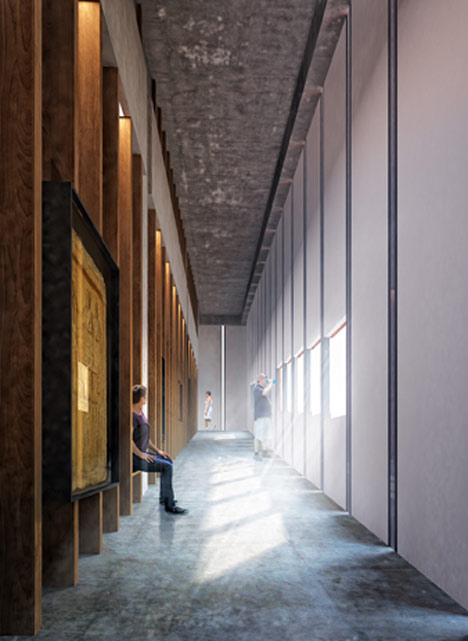
The competition, which was opened in January 2011, received 132 project submissions. Some major architectural firms from Turkey were to be found among them. The jury, composed of prominent names such as Cengiz Bektas, Han Tumertekin, Murat Tabanlioglu, Ayten Savas and Ali Ihsan Unay, convened between 27-29 May 2011 in Ankara. The results were announced on 31 May.
The approach of the winning project by Omer Selcuk Baz sets the design concept upon communicating the visitors a world beyond their perception, with roots and stories in history. The design concept gradually disconnects the visitors in part or completely at certain thresholds from the physical context to reconnect them again. The cubic form of the building is reminiscent of an excavated artefact.
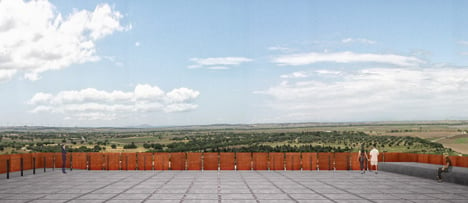
About the building
The design concept must engage in a situation beyond the physical context of the environment. It must look back at a civilisation that lived a while in history, and it must generate a feeling beyond the physical structure. At this point, the preferred approach to design is to segregate the visitors gradually at certain thresholds and to integrate them again. To disconnect the visitors partly or totally from the physical context and then reconnect them.
The design gathers all supportive functions underground on one floor. This floor is not recognised from the ground level and is concealed under a landscape. The exhibition structure is perceived as a robust object on a 32 x 32 metre square plan rising through a split from underground. The visitors descend into the structure along a 12 metre wide ramp. While descending, they come near to the structure in the horizon. Landscape and earth disappear gradually, leaving solely the sky and the structure behind.
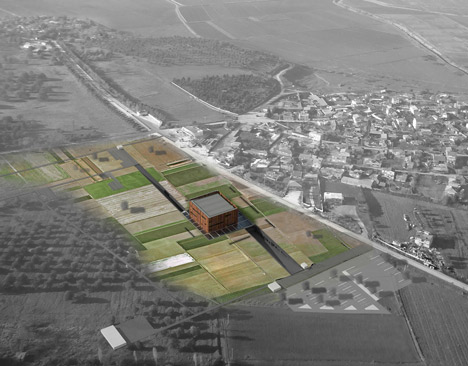
Once underground, the visitors find themselves on a circulation band. A rust red earth-coloured exhibition structure rises through the transparent roof. The rusty metal (Corten) coated structure is timeworn and, just like the broken ceramics unearthed from the excavation site nearby, it recalls a lived history. The history of the material and the architectural design evokes a connection between past and present.
Ascending through the ramps towards the top, one gets a view of the landscape, the fields and the ruins of Troy through the slits on the facades. The rooftop enjoys a generous terrace with a splendid view where one imagines Troy's distant and near history, the memories of the land and its future ahead.
Architects: Yalin Architecture Design
Location: Troy, Canakkale
Architectural Design: Ömer Selçuk Baz, Okan Bal, Ozan Elter, Ece Özdür, Melek Kılınç, Sezi Zaman, Ege Battal, Lebriz Atan
Exhibition: Deniz Unsal, Lebriz Atan, Ece Özdür
Illustrations and Animations: Cihan Poçan